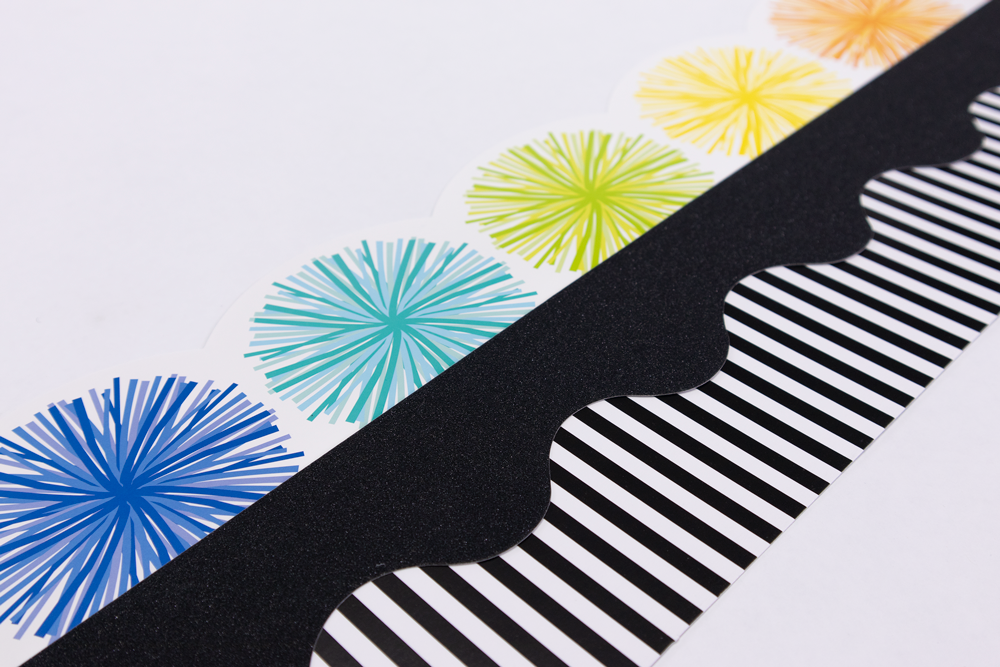
Making classroom learning visually appealing!
Share
We know the struggle of choosing that ONE classroom collection you want to set and forget. You may have grown bored of your classroom decor or you simply want to revamp. Here are a few tips and ideas to spruce up your classroom decor:
1. Mix and Match
You don’t have to stick to one style for a whole year. Mixing and matching gives you the opportunity to switch things around. Stacking borders that are similar in color can make it easy for you to mix and match. Start off with stacking two borders, contrast or similar colors are key to pulling off the mix and match look. Stack a minimum of two borders and max of three. Want to going for four? Well.. I salut you for being so daring.
2. Be Bold
Don’t be afraid of adding bold colors to your classroom decor. The key for experimenting with bold colors have that bold theme carried throughout the classroom. Have a statement piece that is bold and keep the rest of the decor soft and neutral. Too much bold could be too loud and distracting.
3. Don’t limit yourself
If you want to test the waters at the bold approach, try choosing a monochromatic theme and add accents of color. Going this route can create the simplest but most elegant classroom decor. Just keep in mind like-colors compliment each other and bold colors can be displayed easier by using contrasting colors.
Making learning something new visually appealing!
Displaying information in a visual way can be tricky, especially when you want it to look tasteful and informational. There are different types of learning styles that can truly help teachers understand their students. These are the 7 types of learning style of retaining information:
- Visual (spatial): retains information from pictures/video
- Aural (auditory-musical): retains informations using sound or music
- Verbal (linguistic): retains information through word of mouth, or speech.
- Physical (kinesthetic): retains information from the use of your body such as touching or sensing with the hands
- Logical (mathematical): retains information through reasoning and systems.
- Social (interpersonal): retains information from groups or other people.
- Solitary (interpersonal): retains information by working alone
The most common learning style for younger students is visual and verbal learning. Combining visual and verbal learning can help students make the connection of information. It’s easier to show students that yellow and blue make green rather than describing the colors and leaving that information up for interpretation. Visual learning can help students retain new information, making it much easier for them to associate the visual with the verbal information. As students continue to learn through visuals, it can help them develop critical thinking. To create that kind of classroom set up can truly help students learn and retain new things.
Bulletin boards don't have to solely display information. Get students involved by creating a brain storming bulletin board, display their work to give them confidence. Add an interactive classroom jobs chart to introduce students responsibility. The most memorable experience in school starts in the classroom. Creating that kind of environment can help students look forward to new things!




